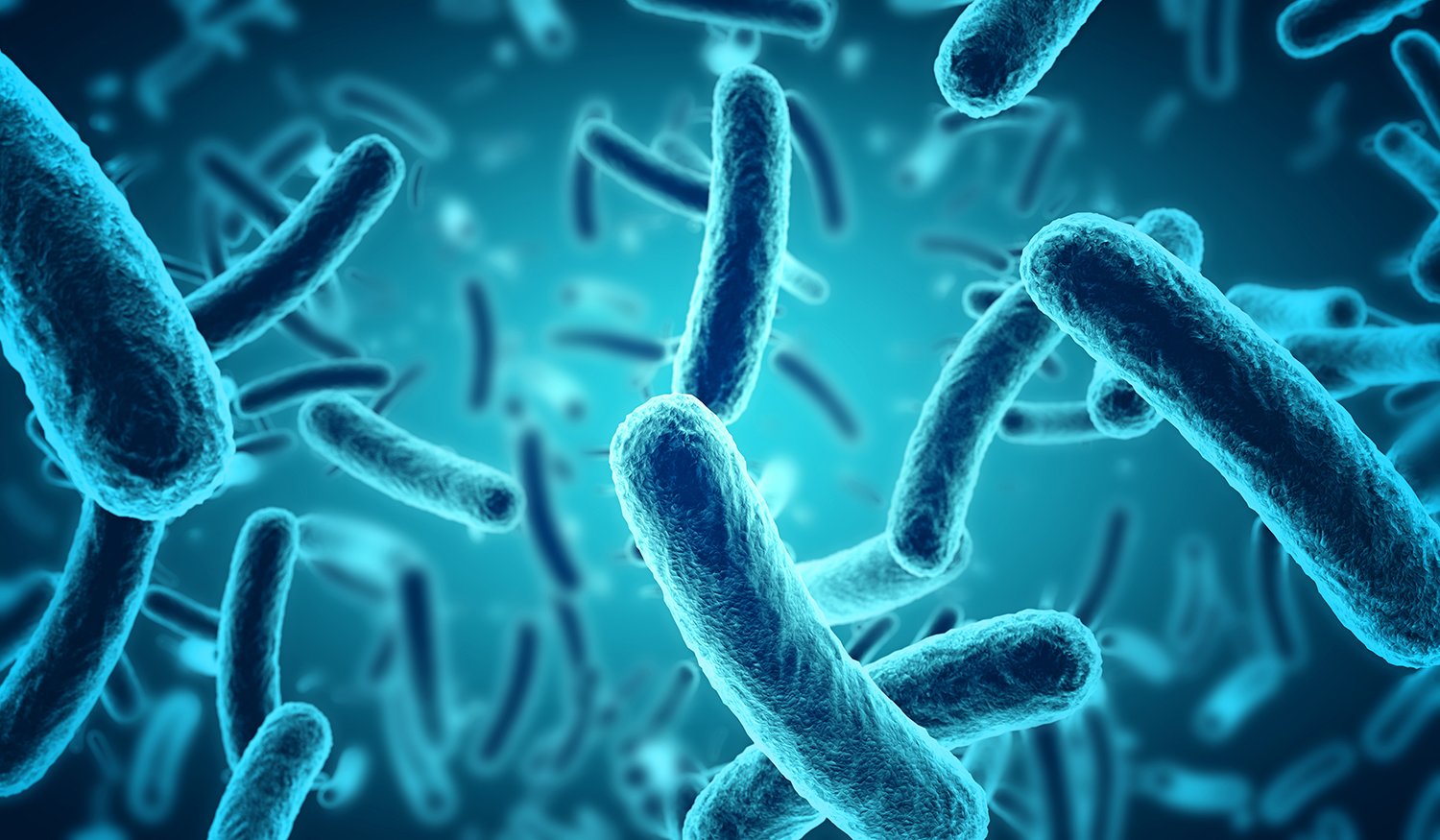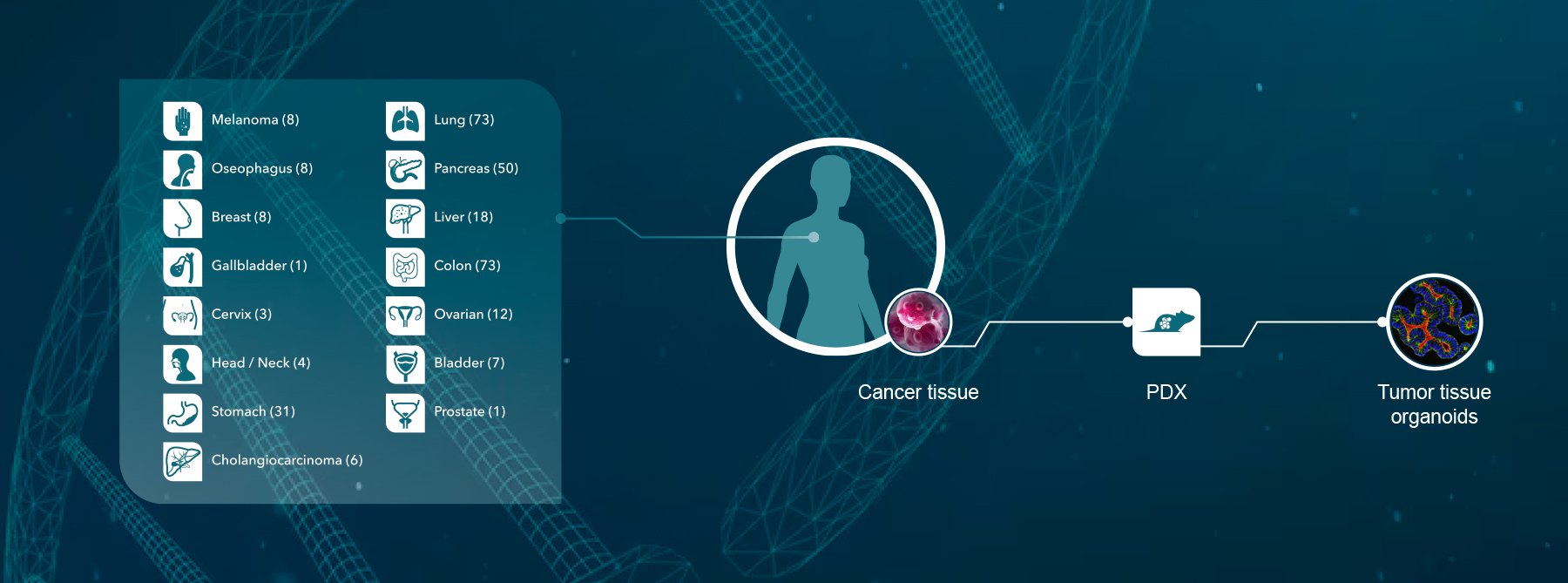Q: How are organoids prepared for High-Throughput Screening (HTS)?
A: Organoids are cultured and maintained in a hydrogel/Matrigel as multi-cellular structures that need to be mechanically sheared to split them into fragments and seeded at approximately 300 organoid fragments (5-20 cells per structure) per well. But this can vary based on the organoid type and how quickly the organoids grow within the timeframe of the assay.
Overall, the organoids are seeded into 384-well plates, and compounds are then added to individual wells and incubated for 5 days. Endpoint readouts vary, but for instance, if you are interested in “tumor kill,” then the readout will likely be a CTG readout or High Content Imaging (HCI). At Crown Bioscience, we use cryopreserved “assay ready” organoids in combination with advanced liquid handling robotics that efficiently seed cells at optimal conditions that have been pre-established for specific panels of organoids. This allows us to seed large numbers of plates per day and screen for multiple compounds, which facilitates the use of organoids for HTS.
Q: How does High Content Imaging (HCI) in 3D models compare to traditional approaches and readouts?
A: Since in vitro 3D models have substantial cell to cell interactions that do not occur in traditional 2D monolayer cultures, there are many more parameters that can be measured. HCI and High Content Analysis (HCA) enable significantly deeper insights into the 3D biology and the mechanisms of specific compounds since these technologies use multiplexing techniques that allow for multiple phenotypic and morphological endpoints to be monitored simultaneously, including for example:
- Nucleus count, size, volume, shape
- Necrosis and apoptosis markers
- Epithelium formation and thickness
- Polarity and swelling
- Internalization
- Cell cycle
- Therapy/target localization
- Monitoring of tumor cells, immune cells, and fibroblasts (in co-culture assays)
These parameters can all be observed at different doses to generate IC50 and area under-the-curve (AUC) values. High Content Screening (HCS) involves automated image-based high-throughput technology as well as HCA, which applies multiparameter algorithms to HCI data, so full z-stack analysis results (in >300 different morphological features) can be assayed in a single well. This provides a wealth of insightful data that can better guide decision-making especially when combined with OMICs analyses.
Q: What is the required number of cell lines or organoids for conducting biomarker analysis?
A: A critical point to keep in mind is that effective biomarker discovery requires a sufficient spread in efficacy, with the number of responders and non-responders balanced to minimize the risk of bias.
For in vitro cell line screening, we typically recommend having at least 10 sensitive and 10 insensitive cell lines, albeit there must be sufficient efficacy difference between sensitive and insensitive cells, for instance, a 10-fold difference in IC50 values. While this is feasible for some cancer types that have a wide array of available models, there are also examples of rare cancer types or specific subtypes where it can be more challenging to ensure you have a sufficient spread.
Q: Can external in vitro or in vivo screening data be considered for biomarker discovery?
A: Yes, we accept datasets based on any preclinical outcomes for biomarker discovery, if the sample size is sufficient to conduct statistical testing. For instance, if you had several models tested at Crown Bioscience and separately at a different laboratory, the experimental datasets can be standardized and merged if they shared similar experimental settings.
Q: Which database provides information on paired organoid and PDX models?
A: Crown Bioscience’s OrganoidBase™ has both PDX-derived organoids (PDXOs) and patient-derived organoids (PDOs). Presently, the database contains more than 400 PDXOs that have a corresponding in vivo PDX model that is listed in Crown Bioscience’s HuBase™ database. Customers can register for access to one or both databases.
Models are listed according to cancer type, and they share identical designations so that the matched in vivo model can be easily identified. Matched patient/PDX features are also listed in OrganoidBase™, including correlations in genomic, histological and pharmacology between the in vitro and in vivo matched pairs, which are used extensively in drug discovery.
Q: Is it possible to conduct proteomics studies using organoids?
A: Absolutely. Crown Bioscience presented a conference poster on this topic. That work compared lung cancer and colorectal cancer organoids to their equivalent in vivo PDX models. Specifically, we described the treatment response to targeted agents in both organoids and PDXs and evaluated downstream target pathways (e.g., Ras, EGFR, RET signaling) and the impact on the functional proteome and phosphorylated proteins and kinase enrichment.
Q: How are primary cells screened, and how do they compare to organoids when both are derived from patient tumors?
A: Primary cells are handled in a similar manner to 2D cell lines, making them suitable for drug screening purposes. In a transcriptomic analysis comparing PDXs, PDXOs, and PDX-derived cell lines (PDXCs) to patient samples and standard 2D cell lines, it was shown that PDX and PDXOs exhibited greater similarity to the patient sample than PDXCs did, while 2D cell lines were found to be the most dissimilar, which is largely attributed to the adaptation of 2D cell lines to growth on plastic surfaces, resulting in a loss of cell-to-cell or cell-to-matrix interactions that are typically observed in 3D or in vivo environments. In addition, deriving primary cells from some cancer types remains notoriously challenging and typical culture conditions often select for cells that can best withstand the in vitro environment.
Q: What are the sources of genomic data for cell lines and organoids used by Crown Bioscience?
A: For almost all of the cell lines and organoids used by Crown Bioscience, including those in our OmniScreenTM and OrganoidXploreTM panels, whole transcriptome sequencing and whole-exome sequencing have been conducted in-house to provide information on gene expression, mutation status, and DNA copy number. For the subset of lines that have not been sequenced in-house, our scientists have compiled publicly available expression, mutation, and copy number data from databases like the Cancer Cell Line encyclopedia. All these data are available in our searchable databases, and the data have been standardized and normalized so they can be used for comparative purposes.
Q: Will organoids eventually replace 2D cell lines, or can 2D and 3D models complement each other?
A: The range of available organoids is expanding rapidly. This has provided researchers with a greater selection of highly clinically predictive models that can be used in many applications that have traditionally relied on 2D cell lines, such as HTS, genetic engineering, and co-culture studies. Since 3D in vitro organoids more closely recapitulate the complex in vivo environment, using organoids can improve and accelerate cancer drug discovery, and they will likely replace cell lines in some contexts. For example, paired healthy and disease organoids can be compared side-by-side (providing insights into on-target/off-tumor effects) which we can’t do with cell lines.
2D and 3D models can certainly complement each other. 2D cell lines are often used to generate large data sets rapidly for hypothesis testing, and this can be followed up with further testing in more clinically relevant 3D models like organoids.
Q: When it comes to biomarker discovery, what distinguishes 3D models like organoids from 2D models?
A: 3D in vitro organoids more closely recapitulate the complex in vivo environment, genetic diversity of patients and the pharmacological response than 2D cell line models. By combining 3D organoids with HCI, more phenotypic features can be identified, thus researchers have a greater chance of identifying relevant features that may be suitable as biomarkers that can be used to monitor efficacy and/or for patient stratification.
Q: Can 3D in vitro models help with patient stratification in the clinical context?
A: Using patient-derived models during early discovery holds significant potential for biomarker identification. When screening an array of compounds with multiple patient-relevant models, valuable data are generated for both responders and non-responders. This information is instrumental for identifying biomarkers that can distinguish which patients might best respond to which drug.
To do this effectively, a comprehensive approach with the necessary infrastructure and experience is required. Overall, you will need to screen a sufficient number of models, coupled with the necessary bioanalyses, HCI, and bioinformatics, so that the data is meaningful and actionable. This is particularly important for immunotherapies where the interplay between the tumor and immune cells is complex to model. Thus, additional optimization, validation, and quantification in other model systems, such as ex vivo patient tissue platforms, may be necessary.
Q: What is your experience in using PDOs in combination with an immune microenvironment for evaluating autologous T cell therapies, such as CAR-T? Would you use the same donor/patient to generate the CAR-T and to reconstitute the immune system in the organoid?
A: Our standard practice involves testing non-autologous T cell therapies using established organoid models, expressing a specific target for the CAR. However, to establish an autologous system, we would need to generate a new organoid model and then use the same donor/patient to generate the CAR-T. An alternative approach could involve using ex vivo tissue where the intact autologous TME remains in situ during the assay.
Q: Are PDXOs and PDOs closely matched?
A: The correlation between PDXOs and PDOs with their respective tissue of origin is remarkably high. We demonstrated in our PLOS ONE publication showing the high correlation between PDXOs and PDXs. While there are not many examples where patient tissue was used to generate both PDOs and PDXs, and subsequently PDXOs, when this has been done, there is a very high correlation. This is not surprising since they all originate from common resident adult stem cells. Our paper in Current Protocols provides examples to illustrate this point.
Q: Can you recommend any databases for assessing drug sensitivity of cell lines?
A: Crown Bioscience’s XenoBase® database provides information on drug responses in cell lines for both in vitro and in vivo studies. To view data for all cell lines, ensure the in vitro filter located at the top is selected. Once this is done, you can select individual cell lines from the available panel.
Q: Do you generate a donor pool from which a single model is derived, or are these donors kept separate and then used as N numbers during screening?
A: We do not generate donor pools. Rather, each of our models are derived from a single patient and is screened as if it were one patient. Any variability observed within a model is due to the inherent heterogeneity within that specific sample/patient. Thus, by increasing the number of models in a screen, you can capture a broader range of diversity that mirrors the heterogeneity present across the patient population.
Q: To what extent are different TME cells represented in organoids? Can cancer-associated fibroblasts be studied with organoids?
A: Since organoids consist of a pure epithelial compartment, there are no TME cells represented in organoid cultures. However, organoids can readily be co-cultured with fibroblasts and/or immune cells to study the interactions between different cell types and their impacts on therapeutic response.
Q: Is there selection pressure when using PDXs for organoid development?
A: Yes, there are differing selection pressures. Highly aggressive tumors tend to exhibit greater success when engrafting into immunodeficient mice, while the organoid culture system accommodates both normal and tumor tissue. Consequently, organoids derived from PDXs will represent more aggressive tumor characteristics. Moreover, in PDX models, the tumor microenvironment (TME) comprises mouse host elements, leading to the replacement of human stromal cells with murine counterparts.
Q: What are the benefits of using PDO over the process of 'passaging' through an animal model?
A: PDOs offer a broad spectrum of tumor grades and normal tissue. In contrast, patient-derived xenograft organoids (PDXOs) enable generation of larger organoid cohorts for each cancer indication, complemented by well-characterized in vivo PDX models derived from the same patients.
Q: What efficiency rate do you typically see when establishing organoid cultures from patient samples?
A: The efficiency rate is dependent on the tissue type, with some types being easier to establish than others; but this also depends on the experience or culturing conditions used for specific tissue types. Crown Bioscience uses optimized HUB protocols that are based on a set of original protocols developed by Dr. Hans Clevers’ laboratory. These protocols have been successfully adapted for different tissue types (both normal and diseased), and they are used widely by labs across the world.
Q: In the context of 3D organoids, can immune checkpoint inhibitors be studied?
A: Absolutely. Immune checkpoint inhibitors are ideally suited to organoid co-cultures using autologous immune cells. We have established such systems to specifically assess immune checkpoint inhibitors in the absence of alloreactive responses that can occur when using non-autologous co-cultures. However, please keep in mind that not all models have matched autologous immune cells, so it is best to speak with one of our experts prior to planning your study.
Q: We have a compound that was shown to be effective in a 2D cell culture. How can we test it in a 3D model?
A:Depending on the target cell line(s) that were used, our scientists will work with you to design a relevant 3D culture assay or select an organoid panel to screen the compound against.
Q: Which cell viability assay(s) do you use for organoids?
A:We typically measure cell viability of organoids via CTG or HCI.
Q: I have significant experience with spheroids but am now considering the use of organoids. Are there any research papers you would recommend reading before I begin?
A:Great that you are exploring how organoids can support your research! There are several classic publications from Dr. Hans Clever’s laboratory that are a good start, and I also encourage you to check out our peer-reviewed articles in journals such as PLOS ONE, Current Protocols, and JOVE (among others), plus many conference poster presentations, on-demand webinars, and white papers, all of which can easily be found on our Resources page.
Q: Is it feasible to develop capillary-like structures within organoids to enhance nutrient supply?
A:While we are aware of studies that have reportedly introduced capillary-like structures into certain in vitro models, we have not tested such protocols. Our standard protocols (both for expansion and experimental work) are optimized to maintain organoids at a maximum size of ~120 µm. This prevents issues with nourishment/growth factor penetration that can occur in larger structures. Some fast-growing models and/or inherently large structures may experience reduced growth or cell death in the core once they exceed a certain size limit. This underscores the need to restrict excessive organoid growth and maintain them as smaller structures.
Q: When it comes to identifying responders from non-responders, is the output similar between a 2D cell line and a 3D organoid model?
A:This will depend on the drug and target/oncogenic driver(s) of the model. However, unlike patient derived models like organoids (and PDXs), transcriptomic analyses have demonstrated that 2D cell lines are not ideal human-relevant tumor models as they tend to have poor predictivity of clinical response primarily due to their adaptation to in vitro growth conditions over several (or many) passages.








